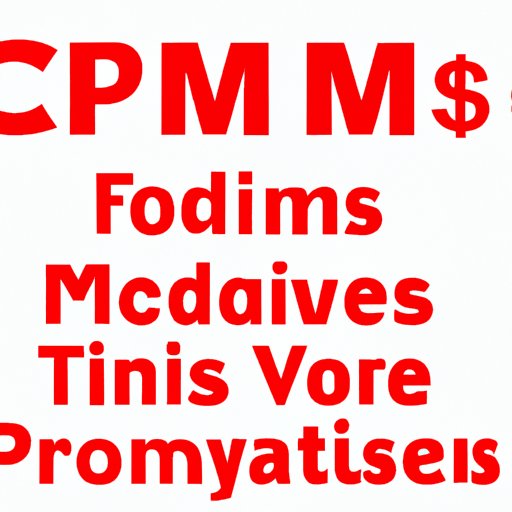
How Many Views on YouTube to Make Money: Exploring the Earnings Potential
YouTube, the world’s largest video sharing platform, has transformed the lives of content creators. From makeup tutorials to gaming walkthroughs, there’s a plethora of content to consume from all corners of the globe. If you’re a creator, you might wonder how much income you can make from this giant platform. In this article, we’ll explore how many views on YouTube are required to make money and what factors affect your earnings, with tips and advice on how to monetize your channel effectively.
Understanding YouTube’s CPM
CPM, or cost per thousand impressions, is a crucial factor that affects your earnings on YouTube. It’s the amount of money advertisers pay to showcase their ads on your videos per thousand views. For example, if an advertiser pays $5 CPM, you’ll earn $5 for every thousand views of the ad.
The CPM rates vary widely depending on the type of content and the advertiser. According to a recent study by Mediakix, the average CPM on YouTube ranges from $0.25-$4.00 per thousand views. However, popular channels that have a sizable audience and suitable niche can get as high as $15 per thousand views.
Factors that Affect CPM and Earnings
Several factors impact your CPM rates and overall earnings on YouTube:
1. Length of videos
Your CPM rate is influenced by the length of your videos. Generally speaking, a longer video will have more mid-roll ads, which may result in a higher CPM. If you create shorter videos, you can optimize your earnings by using pre-roll ads or sponsored content.
2. Demographics of viewers
The demographics of your viewers play a critical role in determining your earnings. Advertisers may pay more to advertise to specific groups, such as those with higher income or in a particular age range. Channels with a large percentage of viewers aged 18-34 typically have higher CPM rates.
3. Types of ad formats
The ad formats you use impact your earnings. There are three primary ad formats on YouTube: pre-roll, mid-roll, and post-roll ads. The pre-roll ads are played before the video, while mid-roll and post-roll ads play during or after the video, respectively. Typically, mid-roll ads generate the most income for YouTubers.
4. Quality of content
Naturally, high-quality content always wins. The amount of effort that creators put into their videos can influence CPM rates. Channels with engaging and original content are more likely to have higher engagement rates and watch times, which can lead to more ad revenue.
5. Seasonal trends
Seasonal trends can impact CPM rates. For example, advertisers may pay more to showcase their ads during the holiday season or back-to-school season. Keep an eye on seasonal trends as it can potentially increase your earnings.
Estimating Earnings Based on Views
It’s hard to estimate the exact earnings that YouTubers make because they depend on several factors. However, a few case studies show the potential earning of successful YouTubers:
- Ryan Kaji, a nine-year-old who reviews toys, earned $26 million in 2019, according to Forbes.
- PewDiePie, a famous YouTuber with over 100 million subscribers, reportedly earned $13 million in 2019.
- Jeffree Star, a beauty guru and entrepreneur, earned an estimated $15.4 million in 2020, according to Forbes.
Several tools and resources can provide an estimate of your earnings based on views. Social Blade is a popular website where you can enter your channel name and see an estimate of your earnings by day, week, month, and year. Other tools, such as Noxinfluencer and VidIQ, provide estimates as well. Keep in mind that these estimates are not always accurate.
Alternative Monetization Strategies
Ads are not the only way to monetize your channel on YouTube. Here are some alternatives to consider:
1. Sponsorships
Leveraging sponsorships can be an excellent way to monetize your channel. When a brand sponsors your video, you’re paid to promote their products or services. Typically, sponsors are looking for channels with a specific audience and high engagement rates. Keep in mind that you must disclose all sponsored content according to YouTube’s policies.
2. Patreon
Patreon is a platform that allows creators to receive recurring payments from their fans or supporters. You can offer various tiers of membership to your patrons, such as exclusive access to content, behind-the-scenes footage, and more. Patreon is ideal for YouTubers who have a small but dedicated following.
3. Merchandise Sales
You can promote and sell merchandise to your audience as a way to supplement your YouTube earnings. You can create t-shirts, bags, stickers, art prints, and other items that your fans will love. Platforms like Teespring, Redbubble, and Spreadshirt are excellent options for custom merchandise.
Conclusion
YouTube is an incredible platform where creators can share their passion and make a living doing what they love. Understanding how many views are required to make money on YouTube is essential for those looking to monetize their channels. CPM rates depend on several factors, such as demographics, ad formats, length of videos, quality of content, and seasonal trends. Creators can also leverage sponsorships, Patreon, or merchandise sales as alternative monetization strategies. Keep creating quality content, and the earnings will follow.





